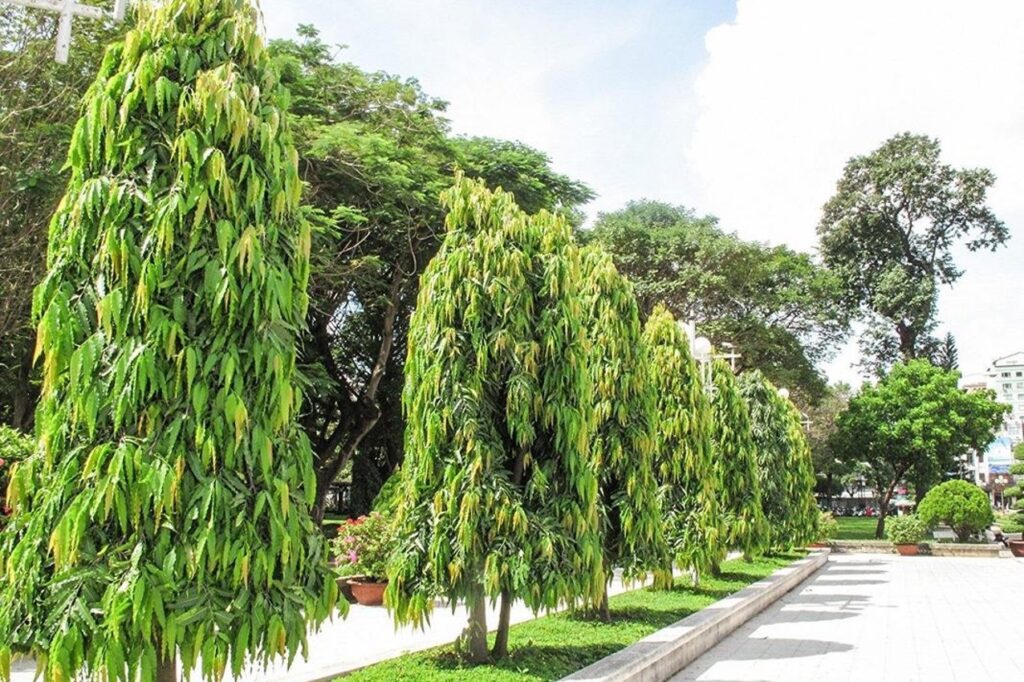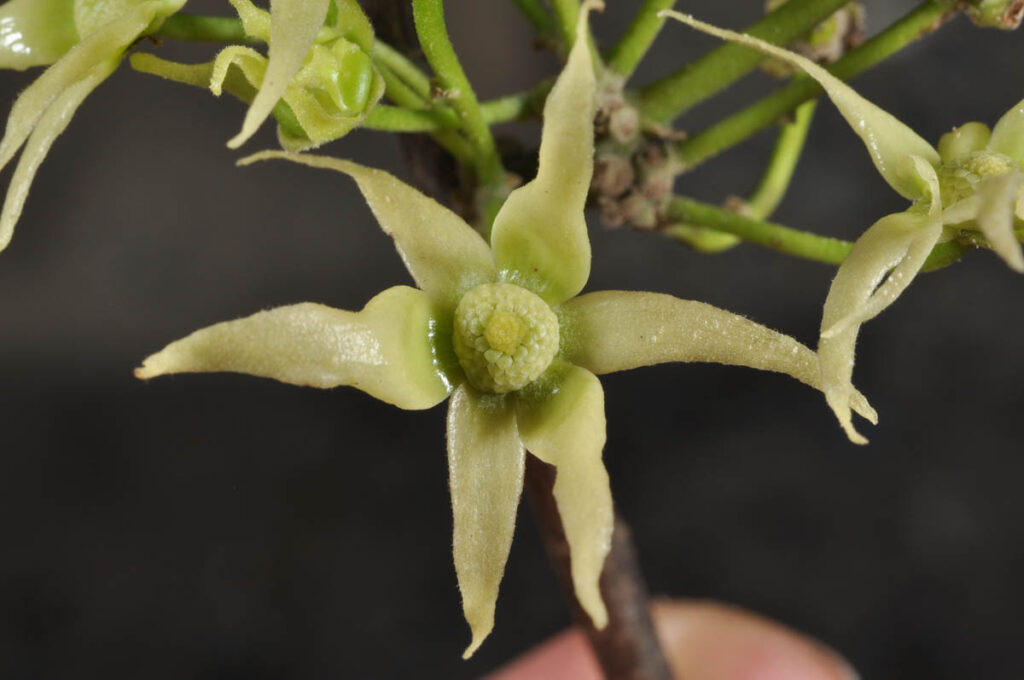False ashoka
Monoon longifolium
Description
Due to its columnar shape, false ashoka trees are often planted along roads and make perfect alignements. It is also commonly planted due to its effectiveness in reducing noise pollution. False Ashoka tree is regarded as sacred in India and Sri Lanka, and commonly planted around Hindu temples. Leaves are strung into wreaths and used during weddings and hung on doors during Hindu festivals. Leaves extracts have anti-bacterial and anti-fungal properties. The bark is used in Ayurverdic medicine to treat fever, diabetes, hypertension and intestinal worms. The wood is used to make pencils, boxes, matches and drum cylinders. The all straight trunks are sometimes used to make masts of sailing ships, hence the other common name, Mast Tree.
Place of origin
South India and Sri Lanka
Ethnobotanical uses
Due to its columnar shape, false ashoka trees are often planted along roads and make perfect alignements. It is also commonly planted due to its effectiveness in reducing noise pollution. Fals Ashoka tree is regarded as sacred in India and Sri Lanka, and commonly planted around Hindu temples. Leaves are strung into wreaths and used during weddings and hung on doors during Hindu festivals. Leaves extracts have anti-bacterial and anti-fungal properties. The bark is used in Ayurverdic medicine to treat fever, diabetes, hypertension and intestinal worms. The wood is used to make pencils, boxes, matches and drum cylinders. The all straight trunks are sometimes used to make masts of sailing ships, hence the other common name, Mast Tree.
IUCN conservation status
Least Concern (LC)



